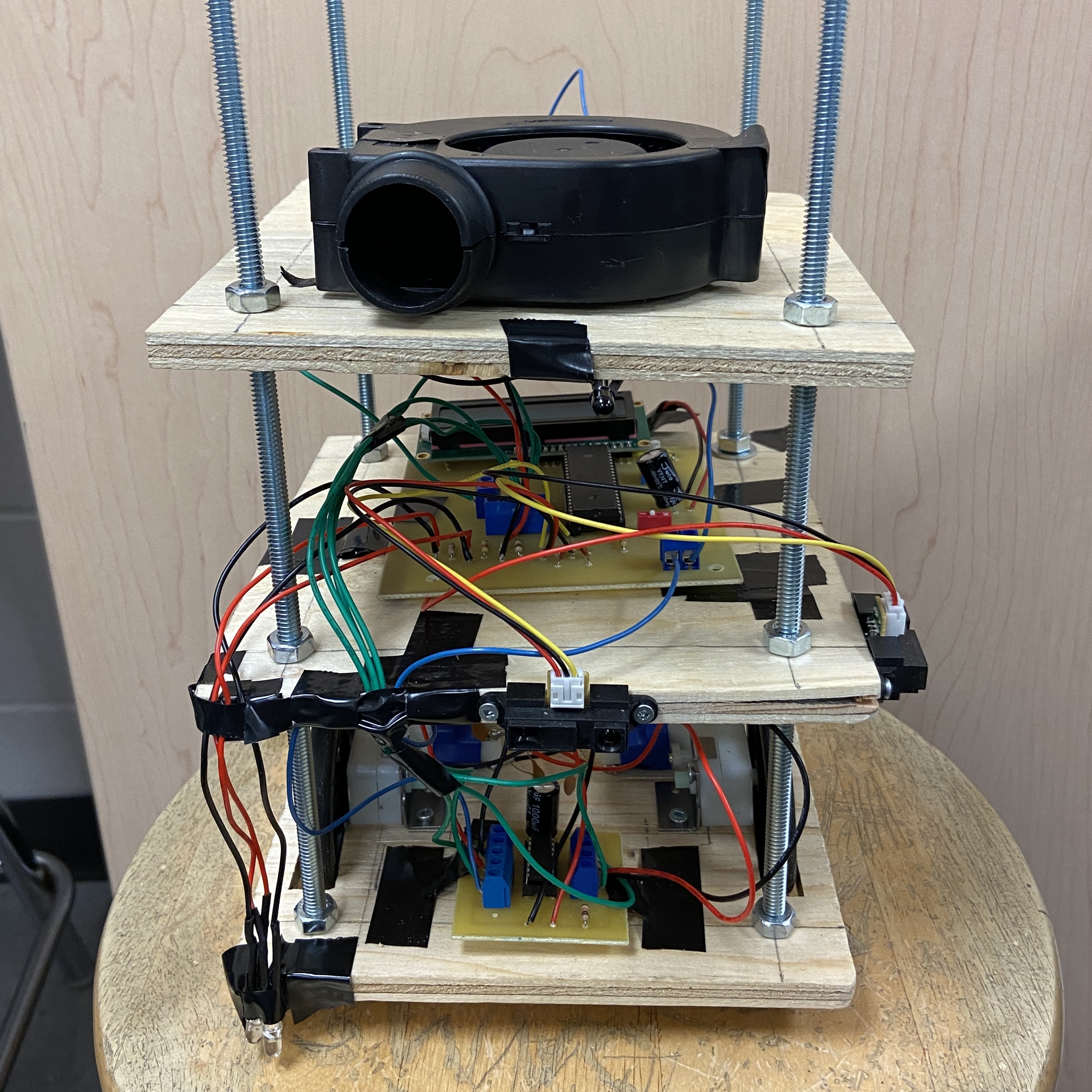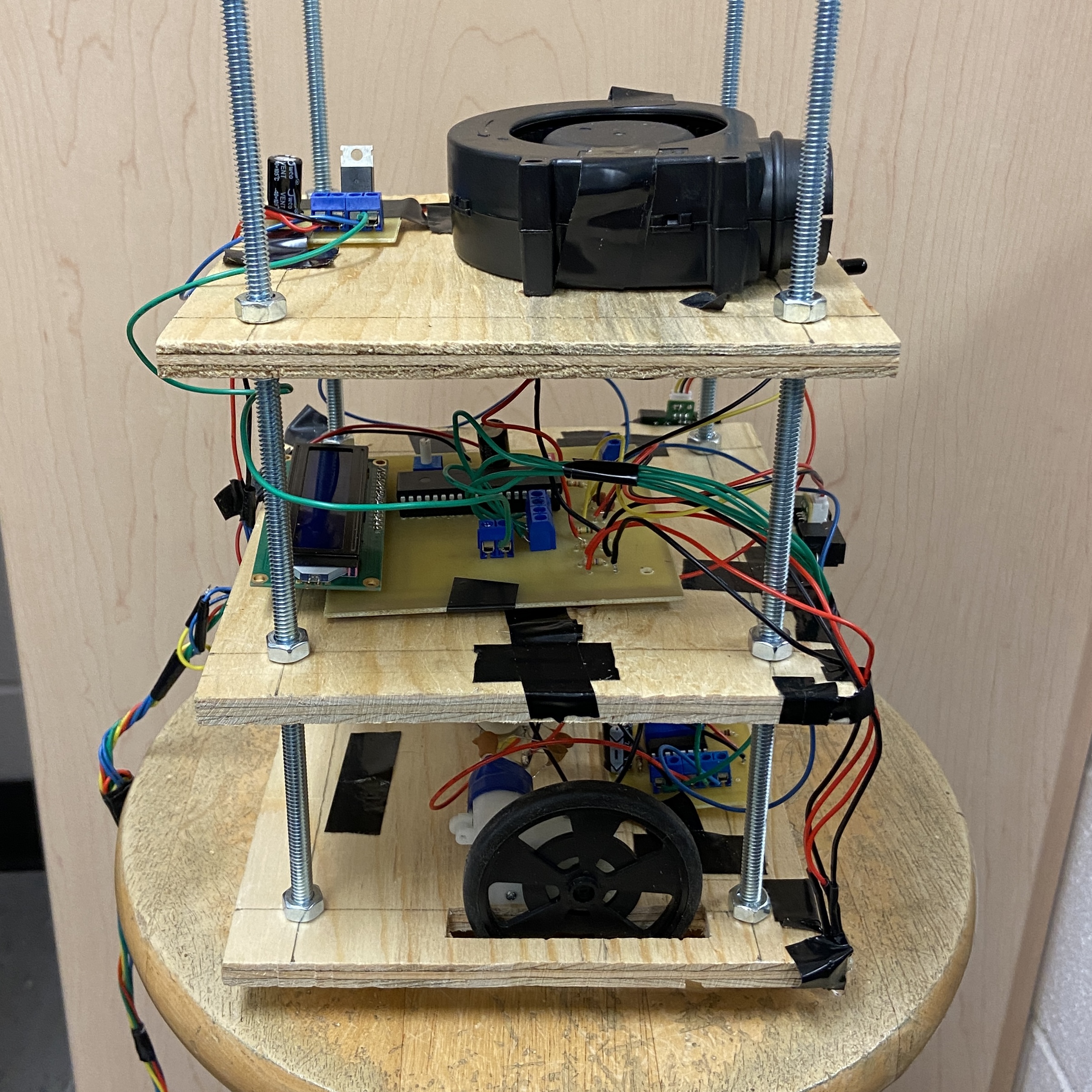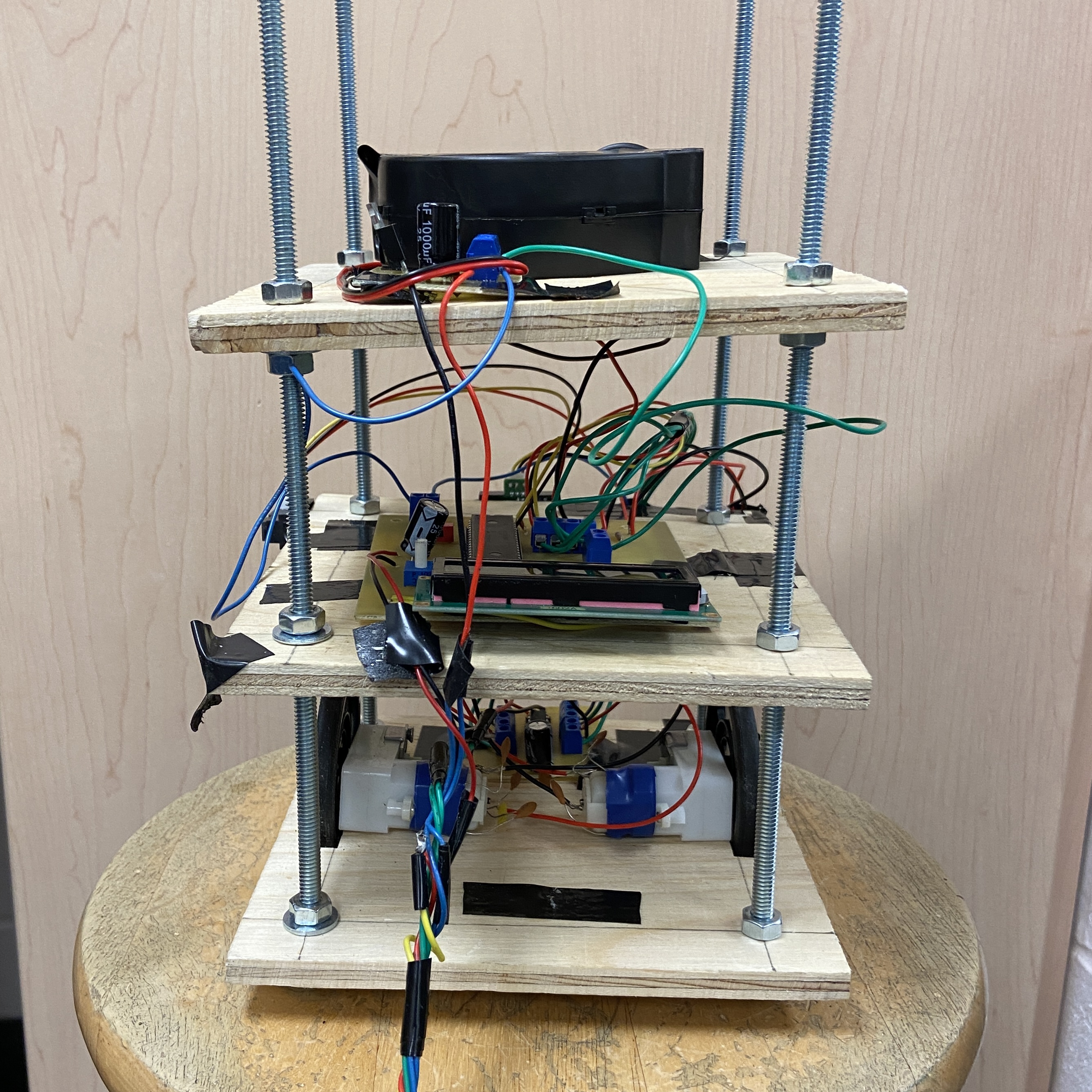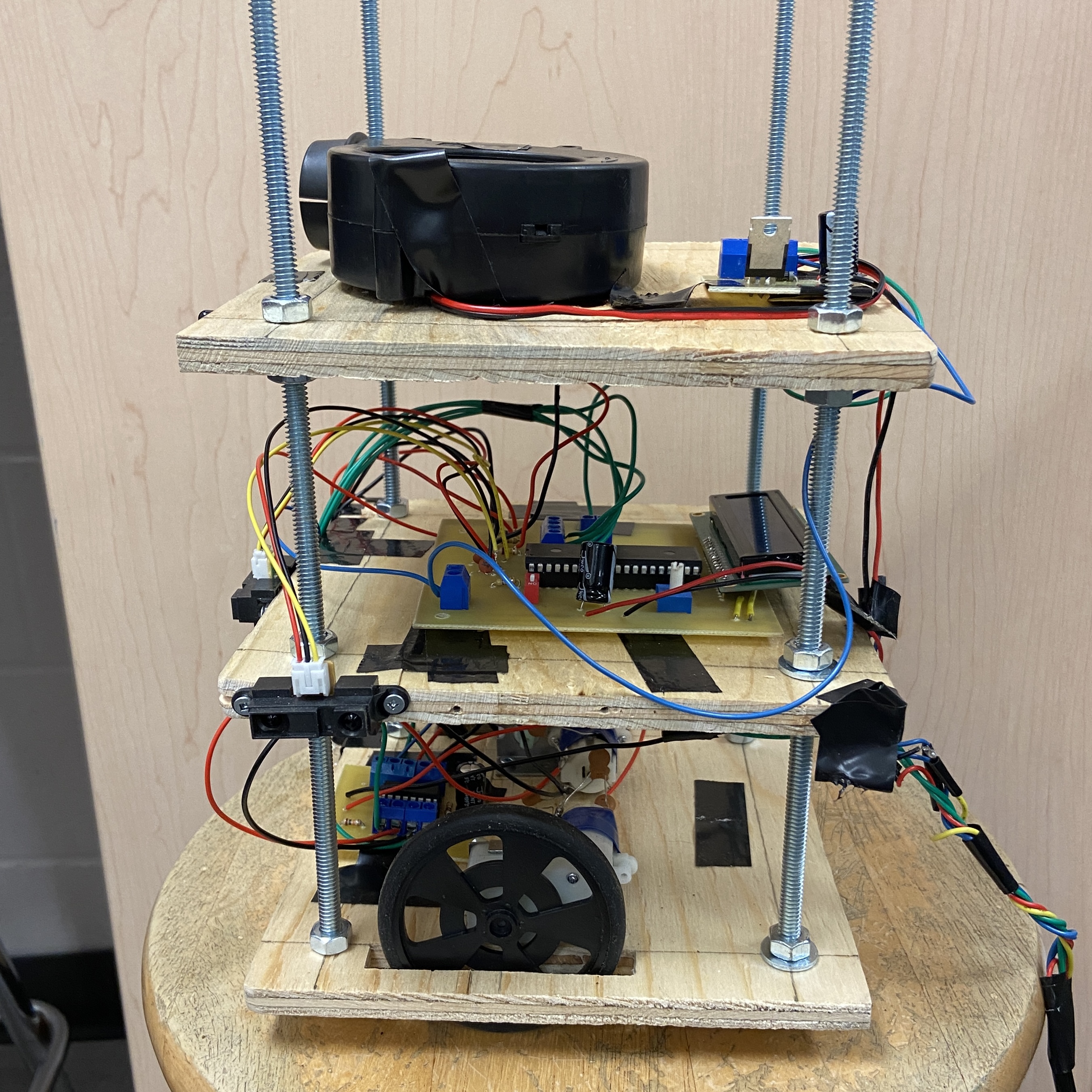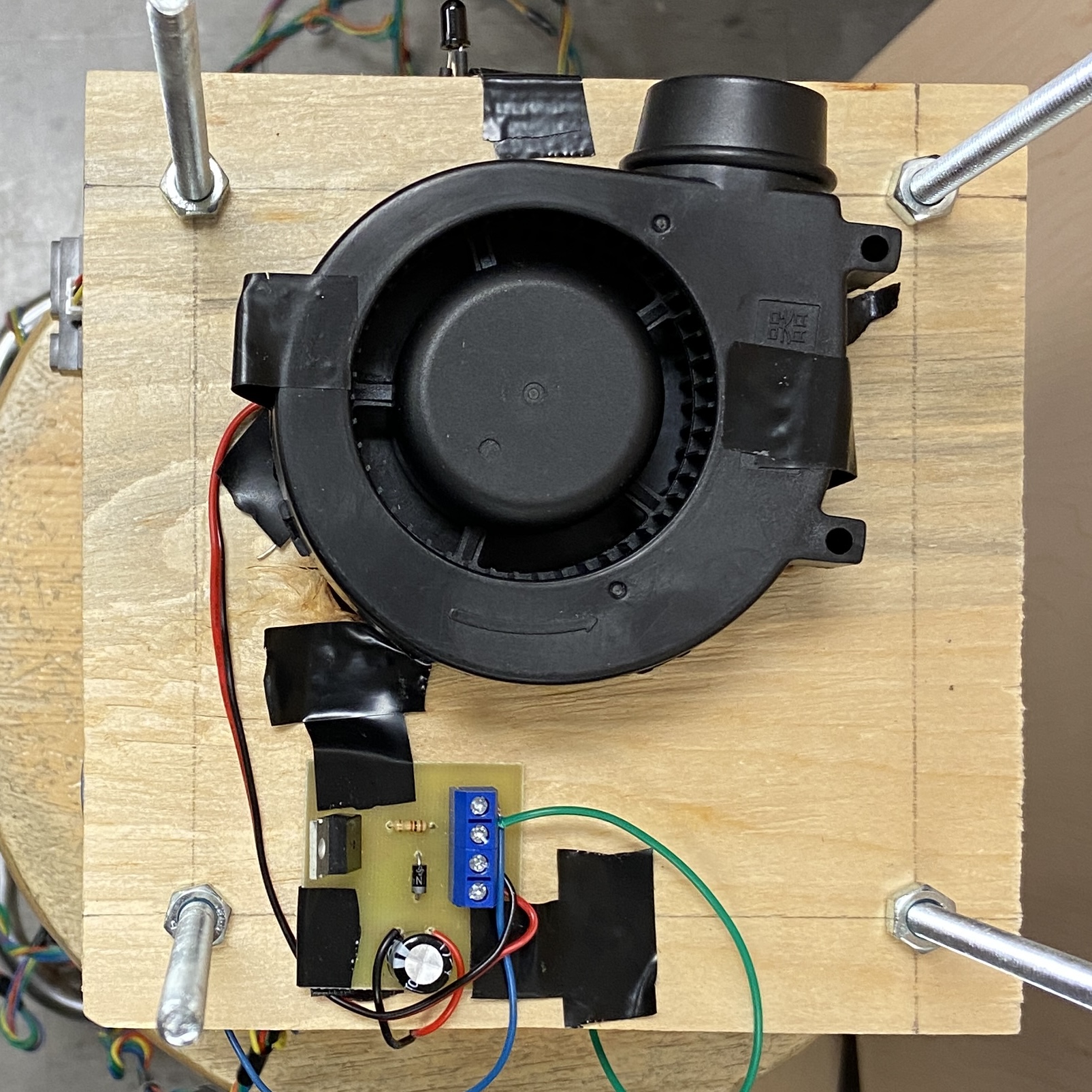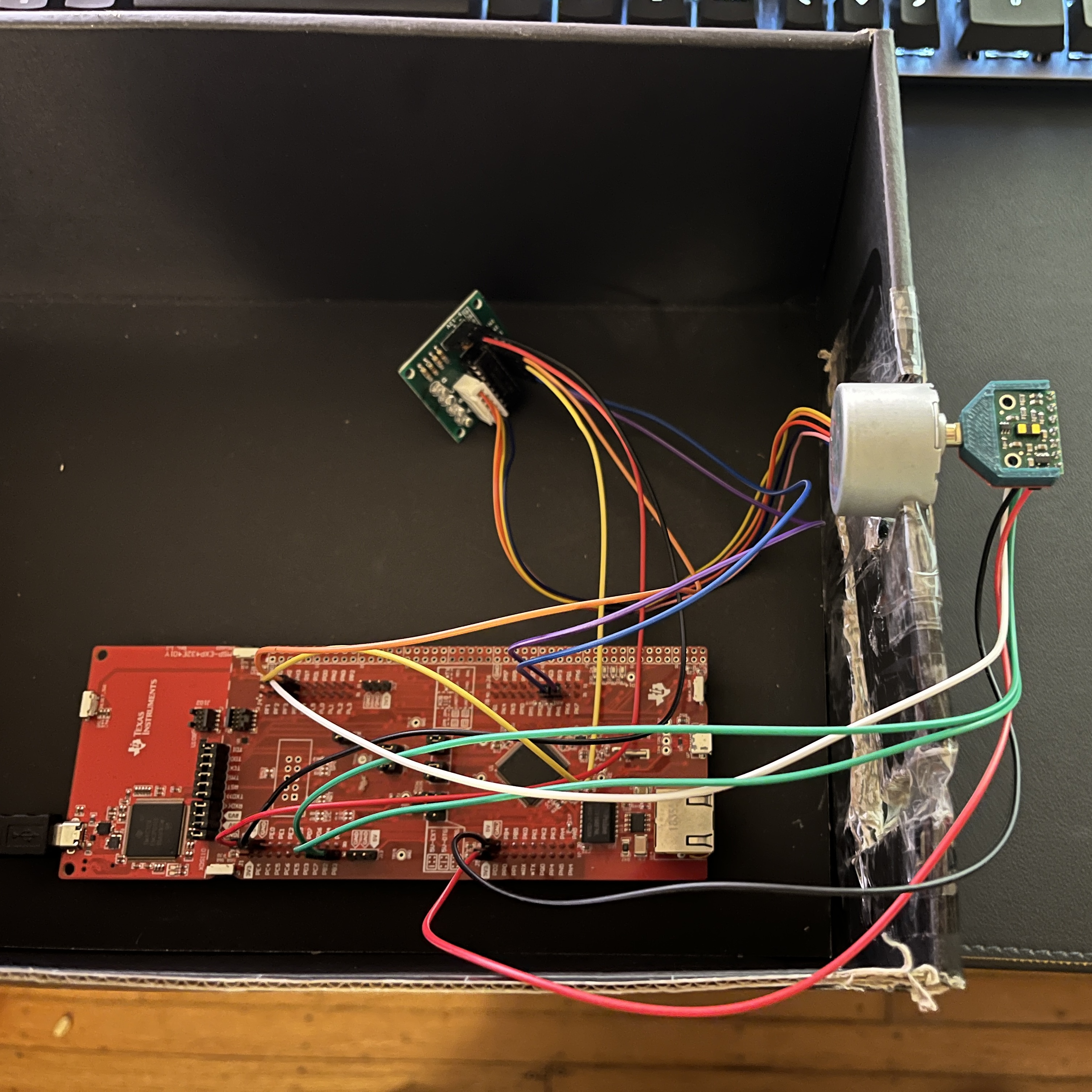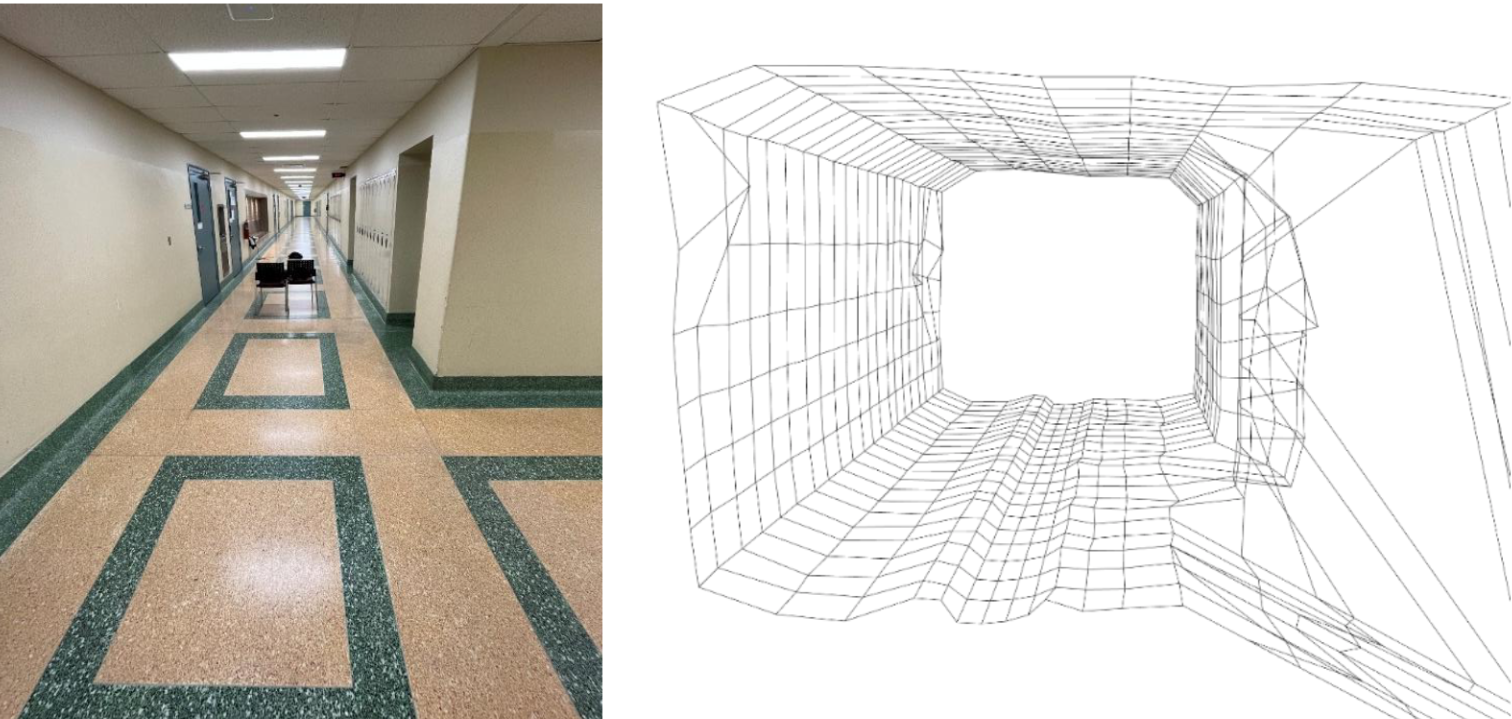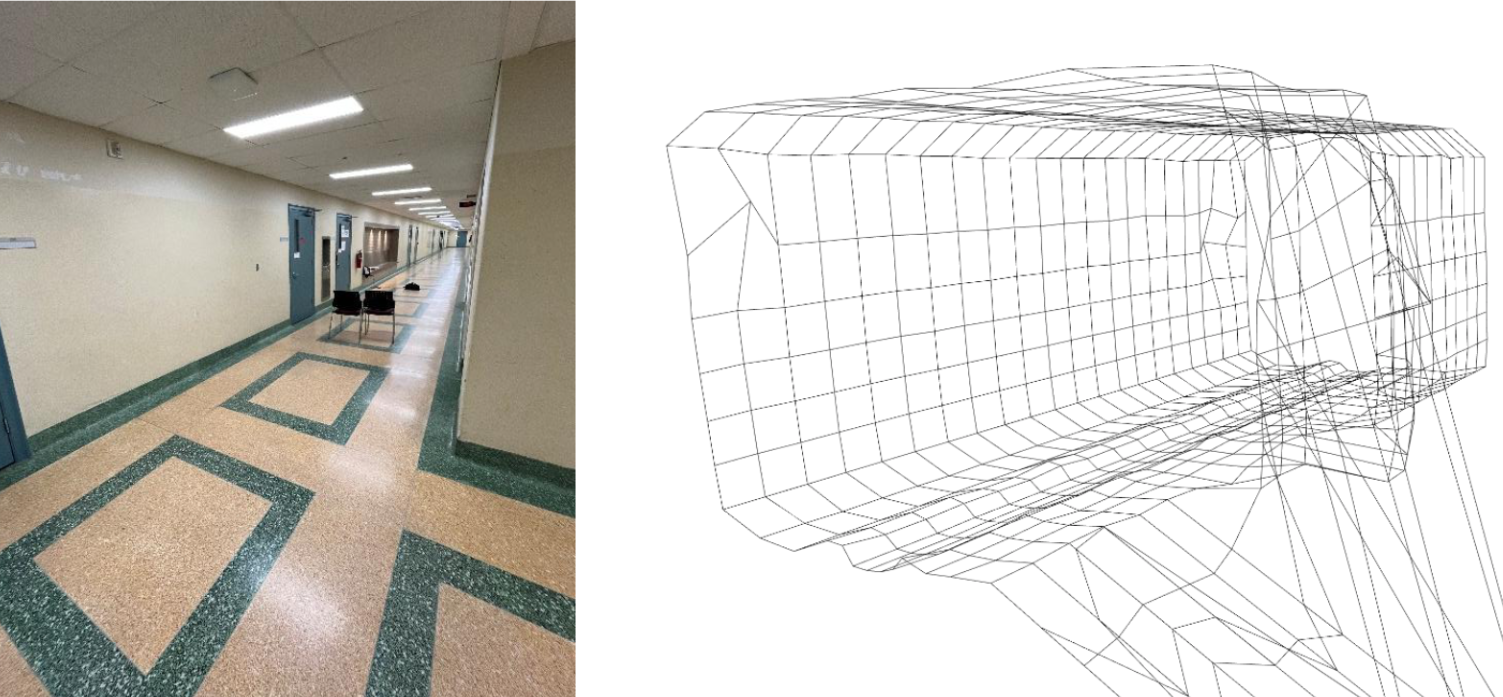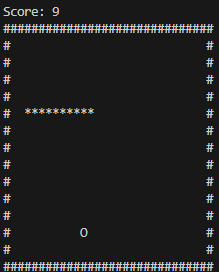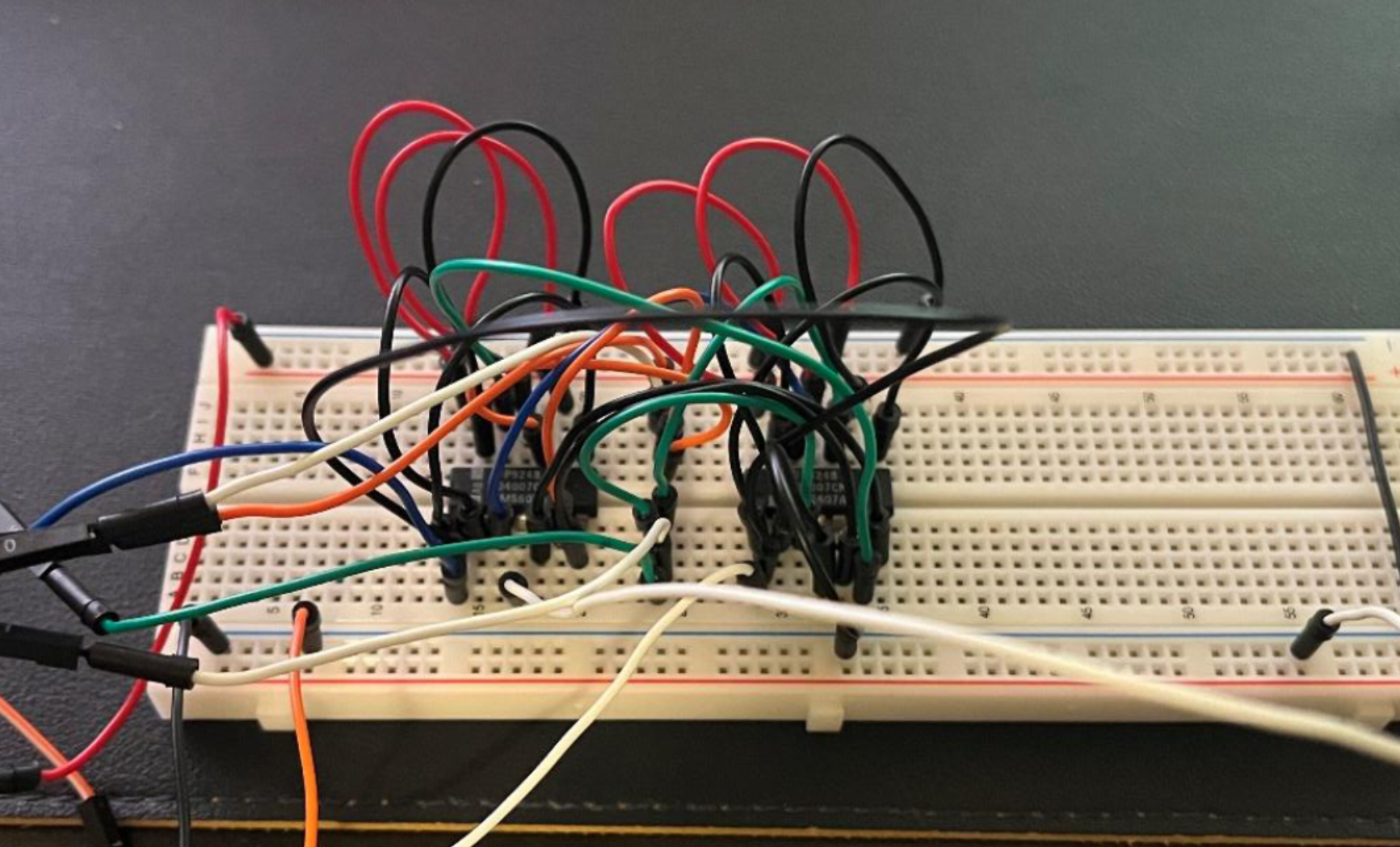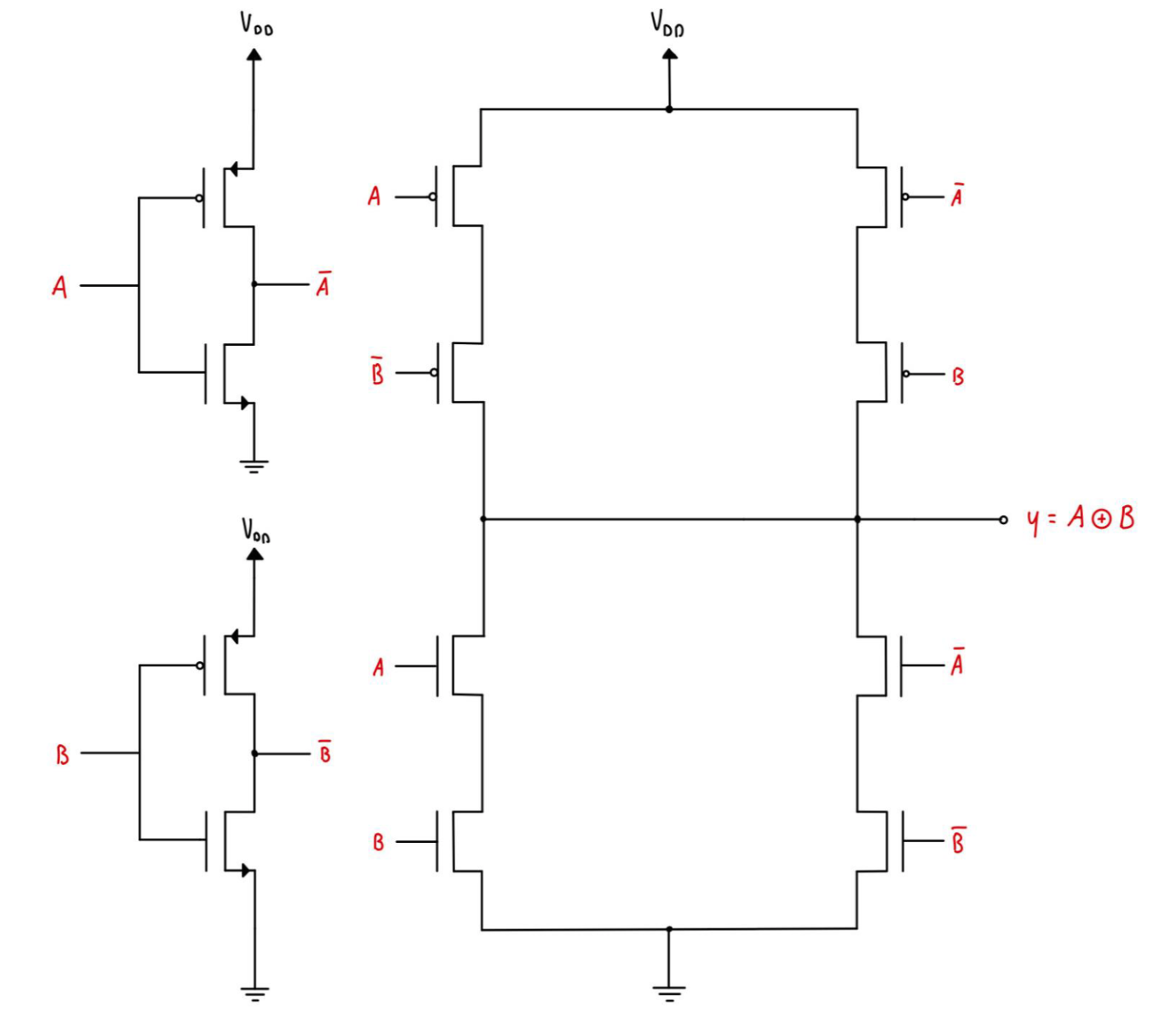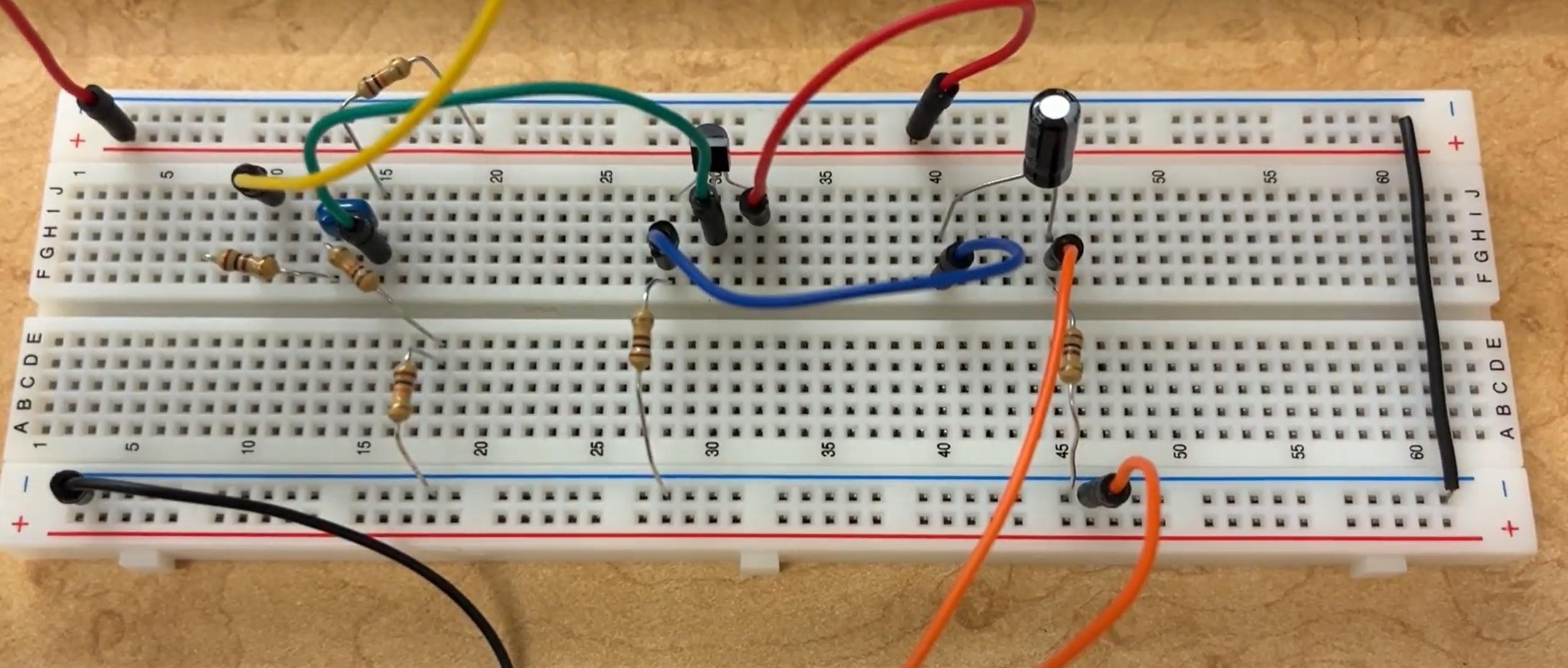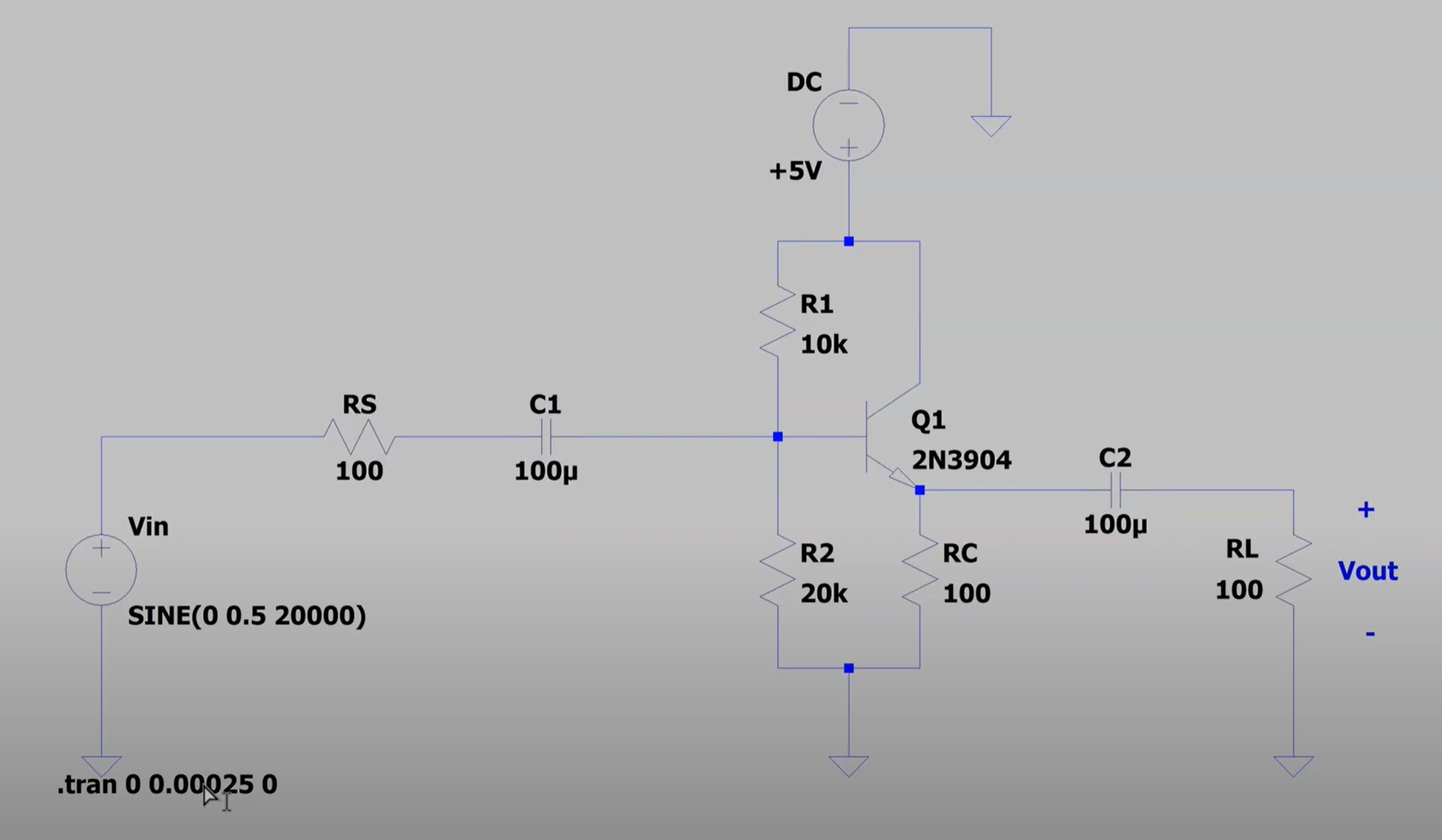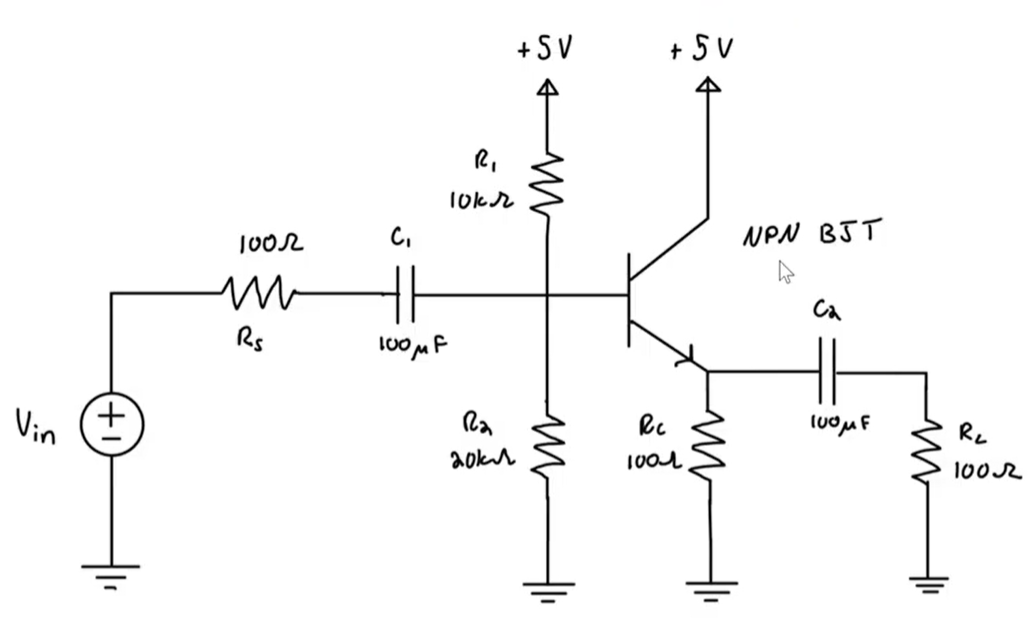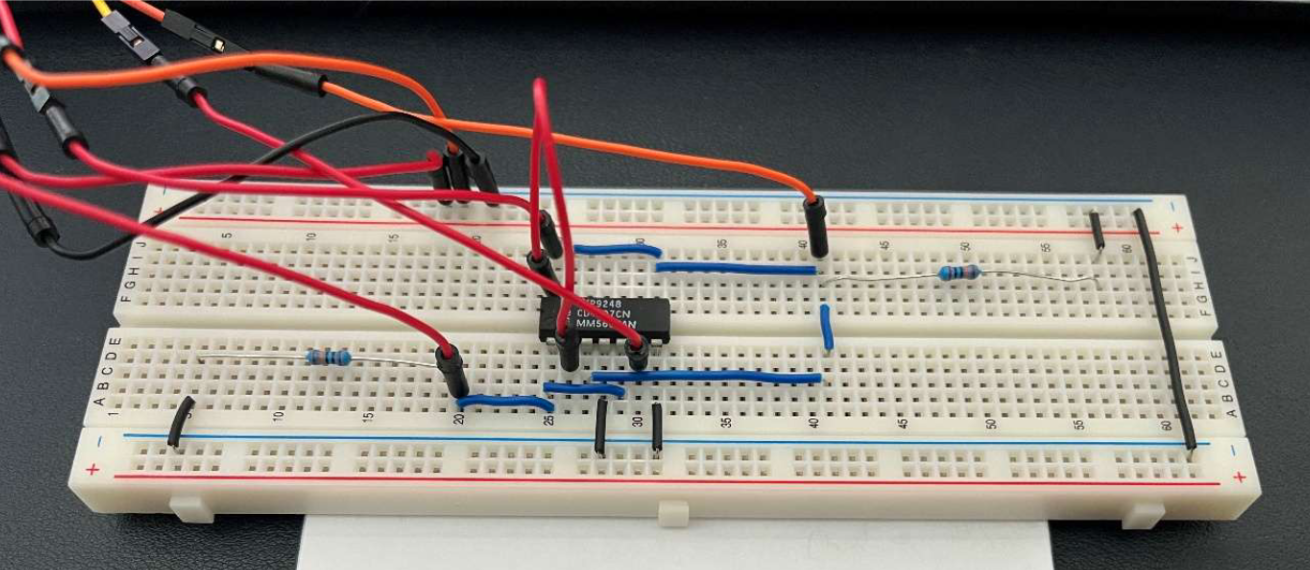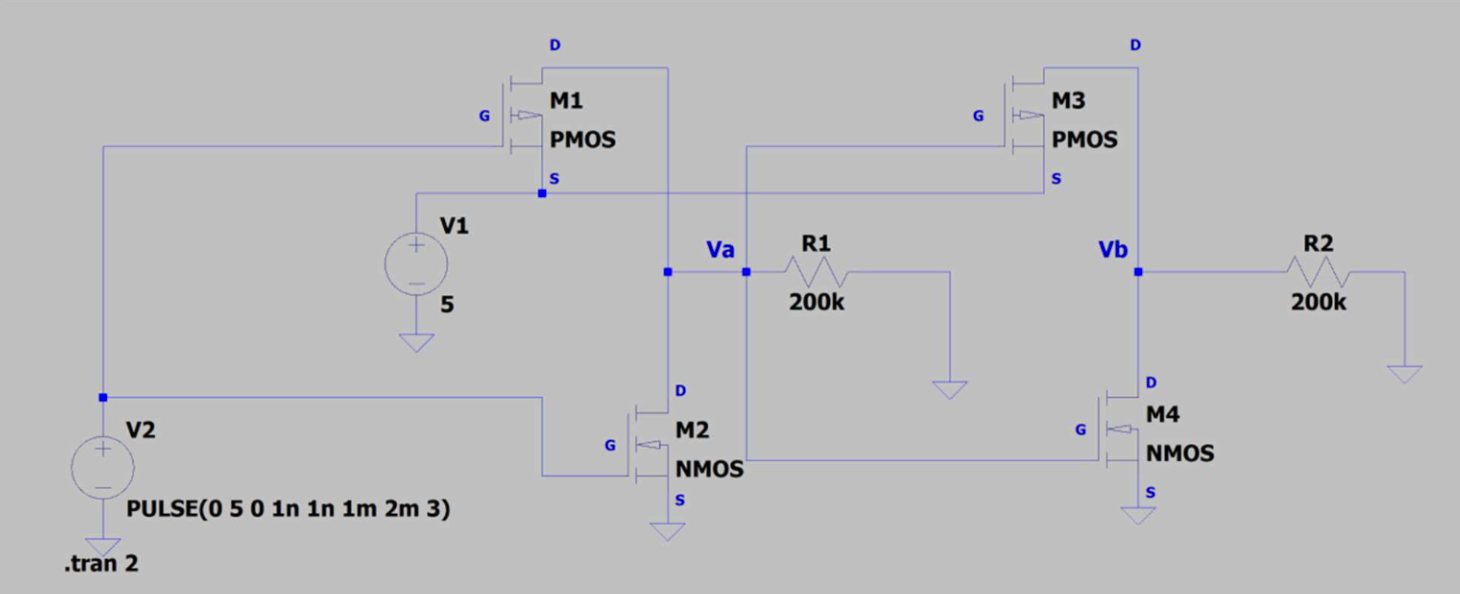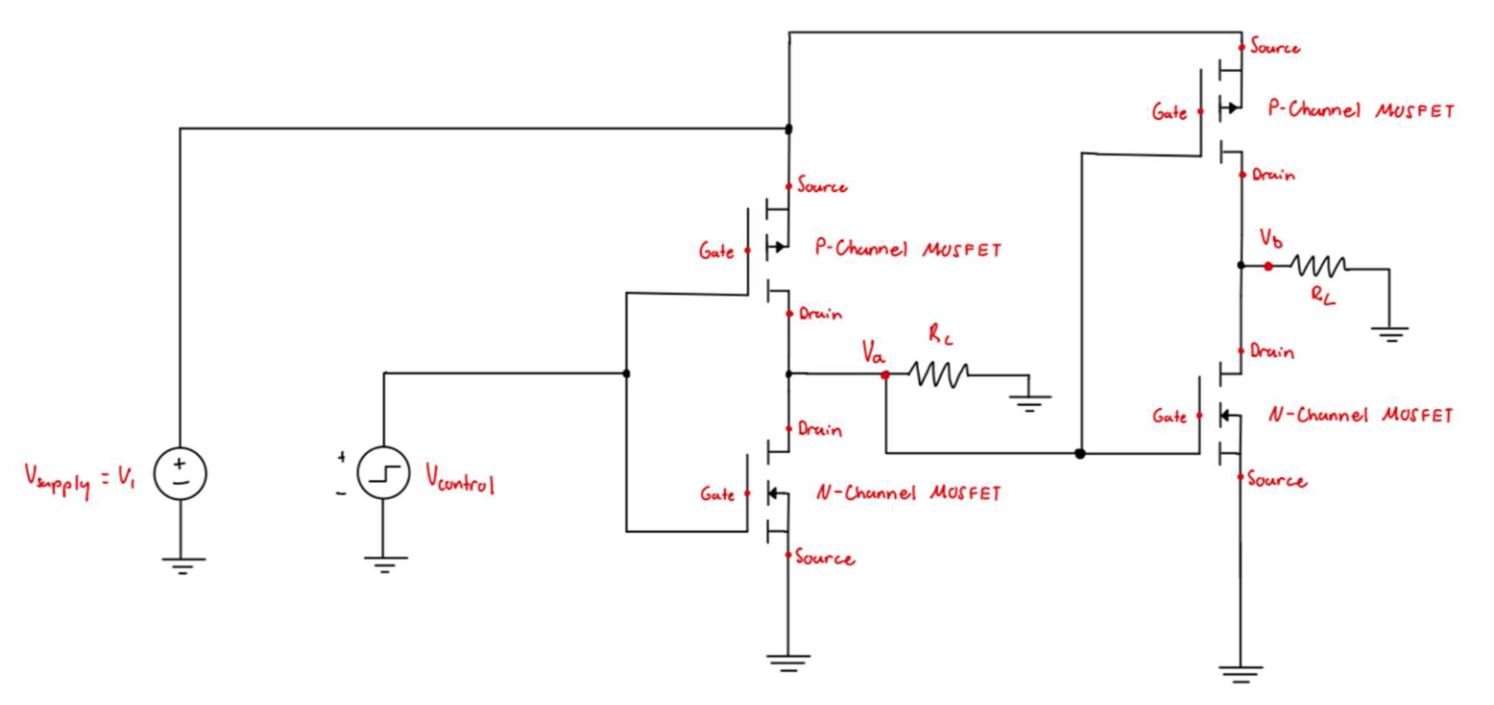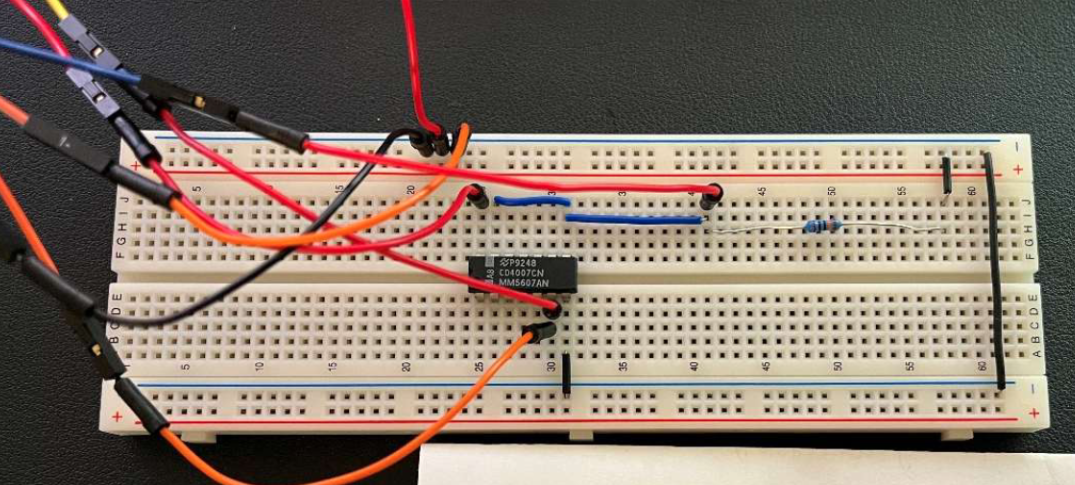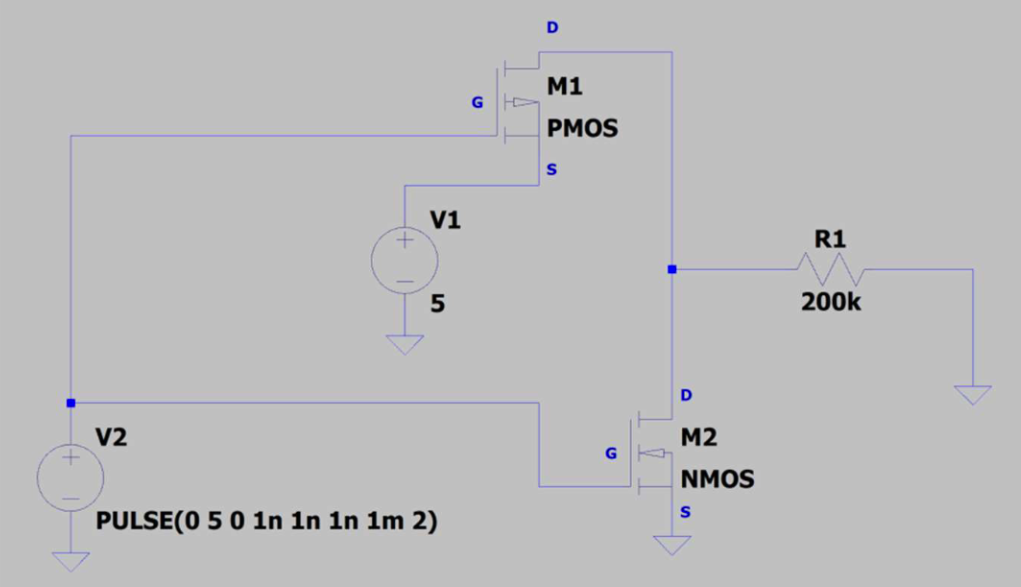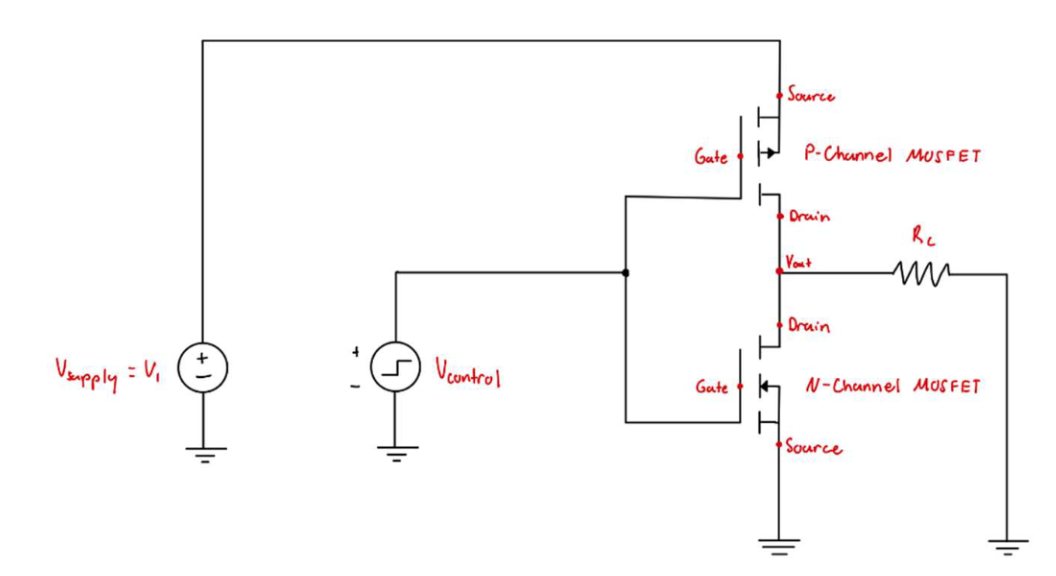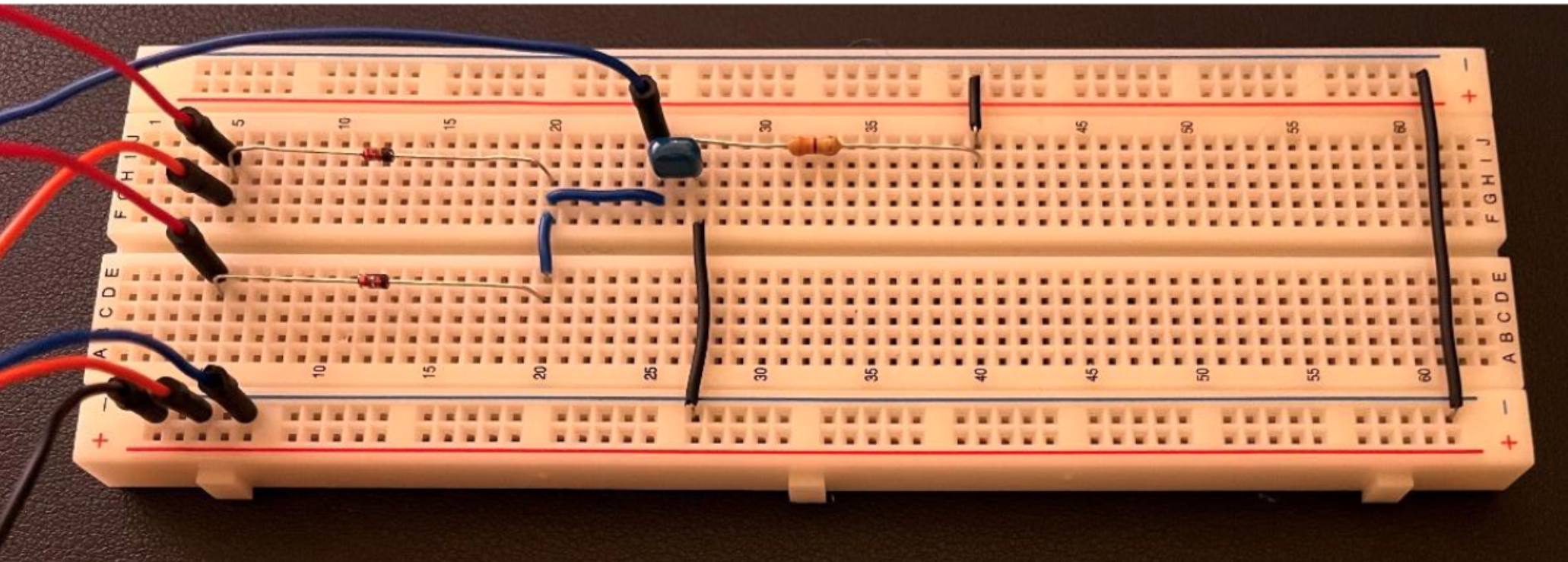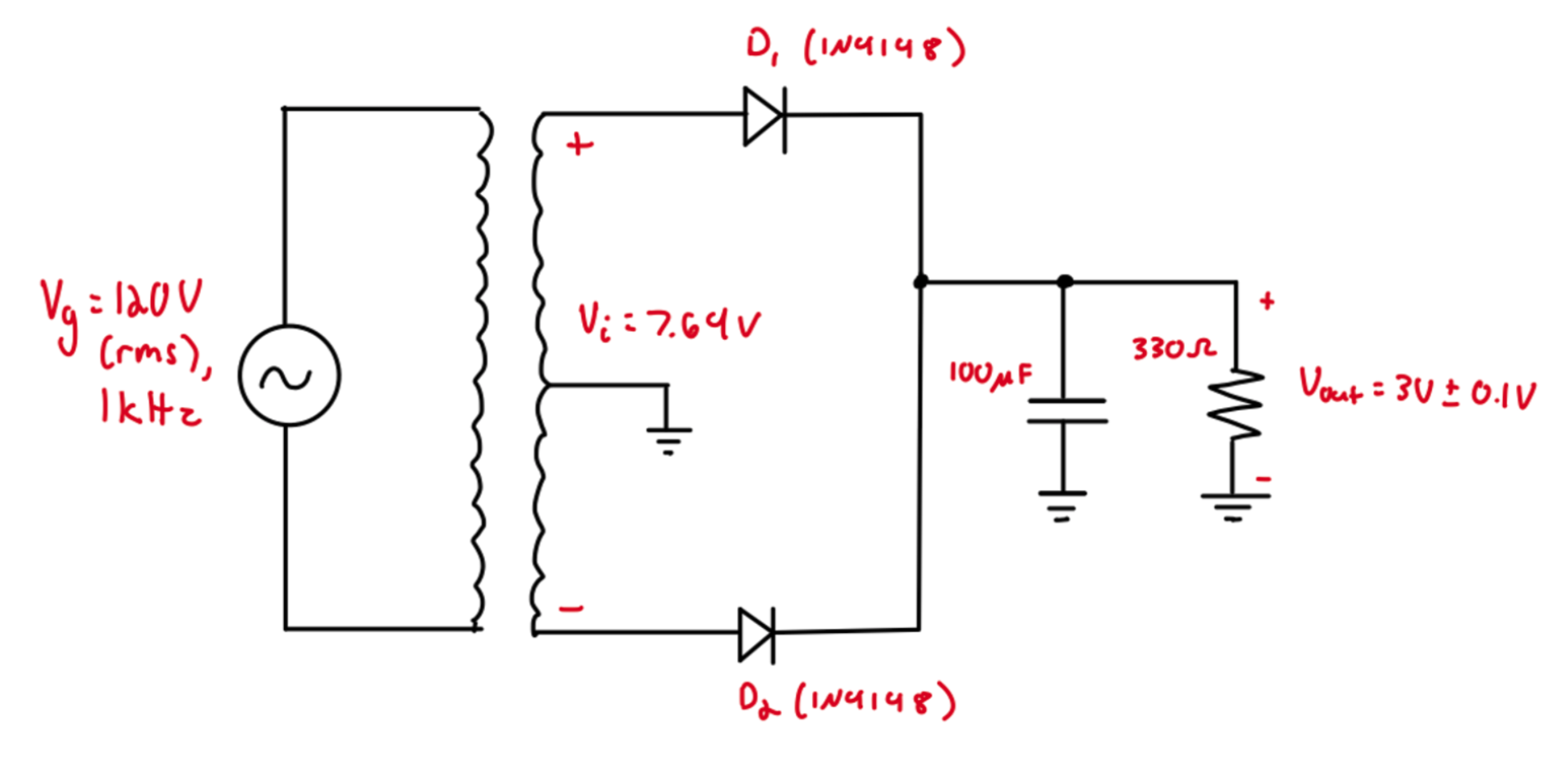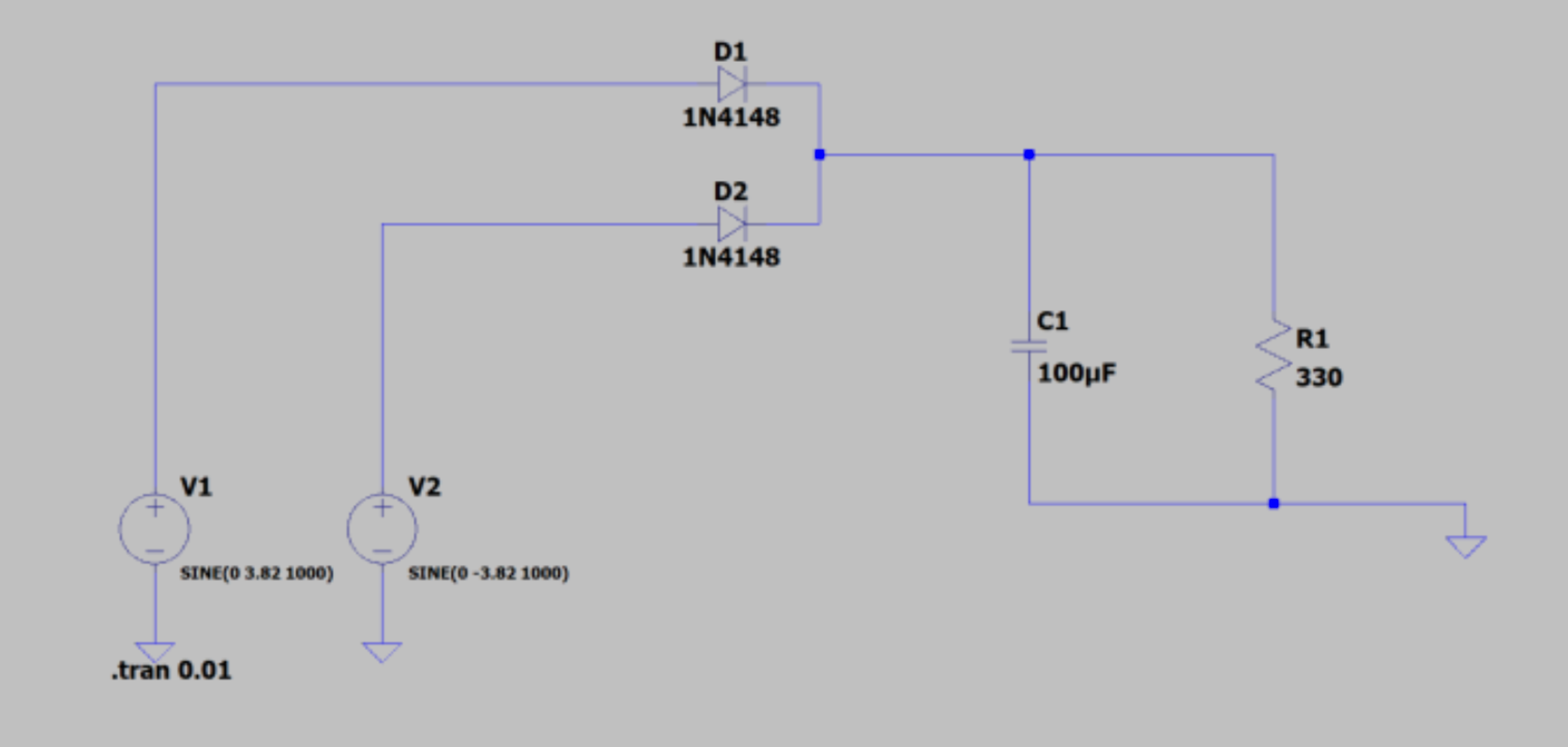Developed an autonomous robot that navigates a maze, detects room entry, and extinguishes flames using a mounted fan. Designed and fabricated custom PCBs, assembled circuits, and integrated multiple sensors with real-time feedback on an LCD display.
Skills:
- Integration of linear/rotary encoder sensors.
- Implementing Optoelectronic and Spectral Sensitivity Detectors.
- LCD display for real-time sensor data visualization.
- PCB design and soldering.
- Motor control for differential drive (two-wheel system).
- Wall-following and line-counting algorithms for maze navigation.
- PIC Microcontroller Programming.
- Wiring sysetms together and troubleshooting circuits.
Embedded 3D Spatial Mapping System
Designed and built a 3D spatial mapping system using a VL53L1X Time-of-Flight sensor mounted on a stepper motor and controlled by an MSP-EXP432E401Y microcontroller. The system generated real-time distance maps, transmitted data via UART for visualization, and used onboard LEDs to indicate system status during operation.
Skills:
- C programming on MSP432E401Y (interrupts, GPIO, UART, I²C)
- VL53L1X ToF sensor integration + data acquisition
- Stepper motor control with ULN2003 driver
- Custom hardware wiring + power management
- Python (PySerial, NumPy, Open3D) for data processing + visualization
- 3D point cloud generation + interactive mesh rendering
- Testing + validation against real-world hallway scans
Built an object-oriented C++ implementation of the Snake game with modular classes, dynamic memory management, and real-time controls. Implemented randomized food generation, snake growth and scoring, collision detection, and wraparound movement while applying clean OOD principles and testing practices.
Skills:
- Object-oriented design: encapsulation, composition, modular class structure
- Real-time input handling with MacUILib
- Snake movement algorithm using custom array list
- Randomized food generation and scoring system
- Collision detection and game-over conditions
- Dynamic memory management (Rule of Six / Minimum Four)
- Unit testing and iterative design workflow
Built and tested a CMOS XOR gate at the transistor level using two CD4007 chips.
Verified functionality with digital I/O, characterized voltage transfer levels,
and measured timing performance with a capacitive load.
Skills:
- Transistor-level digital circuit design with CMOS logic
- Applying PMOS/NMOS sizing principles
- Breadboard prototyping with CD4007 MOSFET arrays
- Functional, static level, and timing performance testing
- Using Analog Discovery 3 for digital I/O and oscilloscope analysis
- Comparing CMOS logic and pass-transistor designs
Designed, simulated, and built a single-transistor amplifier to drive a 100 Ω load
with less than 10% attenuation. Verified gain, linearity, and signal fidelity using
LTspice simulations and oscilloscope measurements.
Skills:
- Analog circuit design with MOSFETs or BJTs
- Selecting and justifying amplifier topologies
- Simulation of amplifier behavior (DC, transient, frequency response)
- Breadboard prototyping with limited supply rails
- Measuring gain, linearity, and fidelity using test equipment
- Comparing theoretical, simulated, and experimental results
Designed and tested two types of “ideal” voltage-controlled switches using MOSFETs
and supporting components. Implemented circuits to approximate ideal behavior,
evaluated non-idealities, and developed a structured test plan with quantitative measurements.
Skills:
- Circuit design with MOSFETs, diodes, and passive components
- Translating ideal device concepts into practical hardware
- Breadboard prototyping and systematic testing
- Measuring and analyzing non-ideal behaviors
- Developing and executing structured test plans
- Troubleshooting and refining designs for performance/cost trade-offs
Designed and built a DC power supply that converted 120 V AC into a stable
3 V ±0.1 V DC output at 10 mA. The project included transformer design,
full-wave rectification, capacitor filtering, LTspice simulation, and oscilloscope
validation using the Analog Discovery 3.
Skills:
- Power electronics design and analysis
- AC to DC conversion using rectification and filtering
- Simulation and validation with LTspice
- Breadboard prototyping and safe circuit construction
- Measurement and debugging with oscilloscopes and test equipment
- Applying theoretical calculations to practical hardware
- Troubleshooting discrepancies between simulation and real-world results
- Documenting design process and performance evaluation
